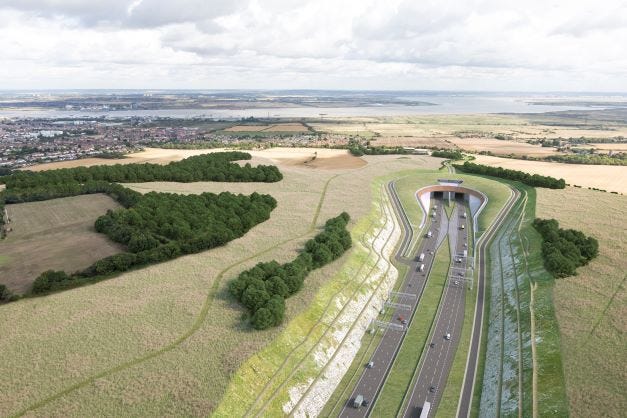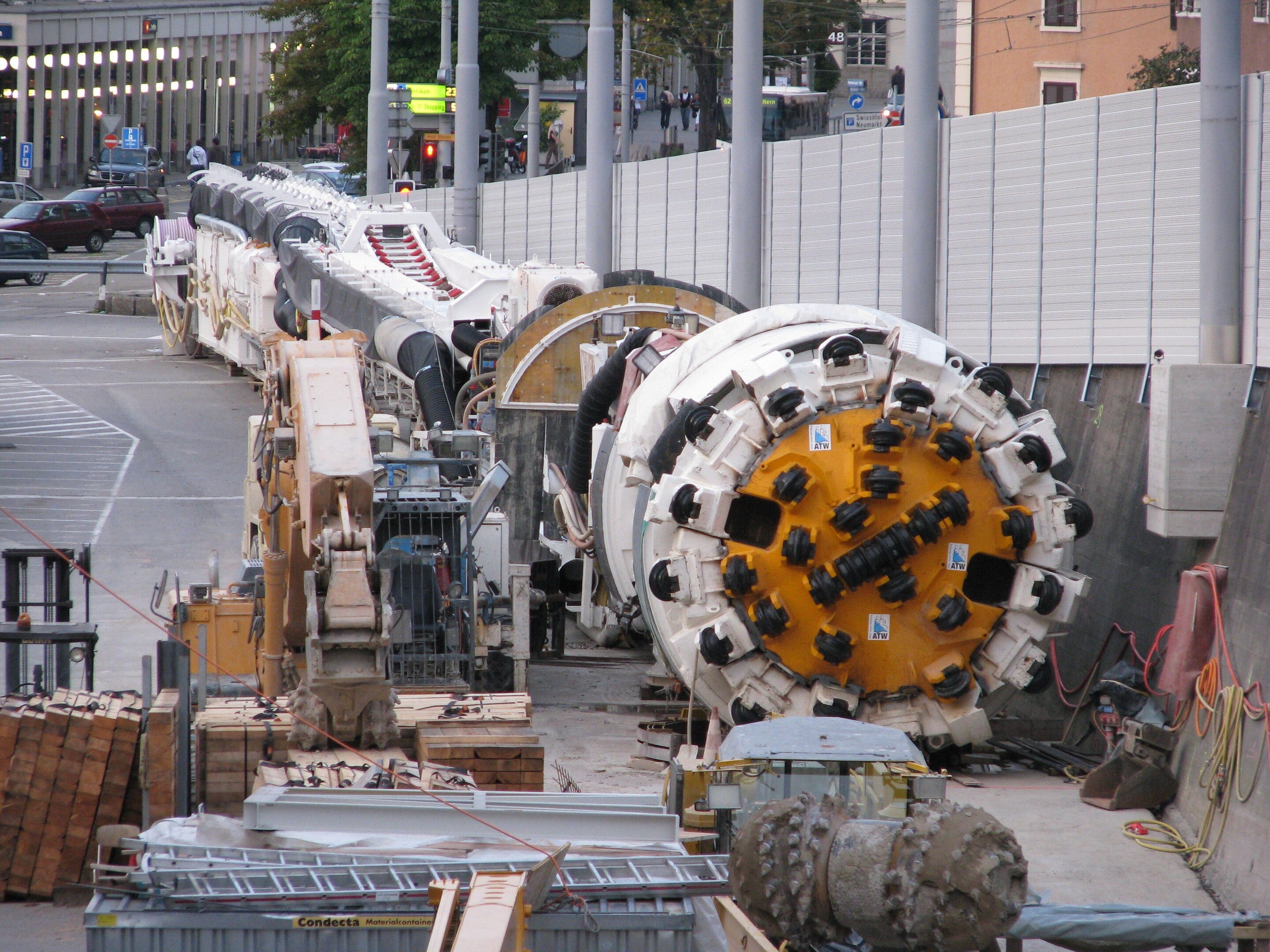|
A Boring Story about Infrastructure Planning
How our inflexible planning system can discourages cheaper, greener changes
The Lower Thames Crossing is a vital road project necessary to relieve extreme congestion at the Dartford Tunnel. It is also the most expensive project on National Highways’ books by a long way. And at a cost of £8.2bn-£9bn, it is more than ten times more expensive than longer and deeper road tunnels being built elsewhere in the world. In fact, the Lower Thames Crossing’s planning application alone costs more than twice as much as it cost Norway to actually build the world’s longest road tunnel.
Now of course, Norway’s geology is extremely favourable for tunnelling, yet this comparison isn’t tunnelling under the Thames versus tunnelling under Norway’s hard rock. It is applying for planning permission to tunnel under the Thames versus actually tunnelling in Norway.
It goes without saying that any measures that can reduce the cost of the Lower Thames Crossing would be extremely welcome. The good news is that one has been identified by one of the project’s contractors. Instead, as was originally planned, of using two expensive tunnel boring machines starting at the north then tunnelling south side-by-side, National Highways is now proposing to use a single tunnel boring machine moving from north to south and then looping back.
Tunnel boring machines are extremely expensive and can cost tens of millions of pounds. Building them is energy intensive too. National Highways estimates that using one tunnel boring machine instead of two would “result in a saving of approximately 38,000 tonnes of carbon.” The equivalent of taking almost 30,000 cars off the road for a year.
In theory, two tunnel boring machines can do twice the work as one so it should mean a time saving. Yet, National Highway has found that using just one would actually allow the project to start earlier as fewer temporary works need to be built before tunnelling can start, which means that using one machine will take the same amount of time overall as using two.
Greener and cheaper, without taking longer, what’s not to like? In an ideal world, the planning system would be flexible and responsive to any change that kept project costs down while delivering environmental benefits.
Yet the Planning Inspectorate have told National Highway to:
“provide a tabulated addendum to the ES [Environmental Statement], reviewing the construction effects changes consequent on the possible effect of changing from the use of 2 tunnel boring machines (TBMs) to 1 TBM. The duration of works and the effects experienced by receptors should be expressly considered. Effects and conclusion changes (if any) should be tabulated for each component of the Environmental Statement (ES) analysis.”
In layman’s terms, you need to do a bunch more paperwork before we’re convinced that using one tunnel boring machine instead of two is no worse for the environment.
The savings from using one machine instead of two are significant. More than enough to cover the cost of carrying out any additional studies as well as any additional billable hours for National Highways’ already well-remunerated consultants and lawyers. Yet not all engineering changes will generate such large cost savings. There will be times when a bright engineer has identified a cheaper and greener way of working, but the additional cost savings will be eaten away by legal fees and the risk of slowing the entire project down to carry out new environmental studies.
In the case of the tunnel boring machines, there’s a legal issue over whether or not using one instead of two counts as a material change or not. National Highways argue it doesn’t. National Highways position has been that its lengthy assessments already include the use of a single TBM in its “reasonable worst case” scenario which has been assessed. Yet, change or not, it’d be hard to argue that the environmental impacts, and the cost, of using one less machine are anything but overwhelmingly positive.
There’s a simple fix to cut through this red tape. To save time, money, and the environment, reform the Nationally Significant Infrastructure Project process to automatically approve any project amendment that has a clear positive or neutral environmental impact. The kind of flexibility which National Highways is seeking should be promoted, instead of having further impediments erected.



No comments:
Post a Comment